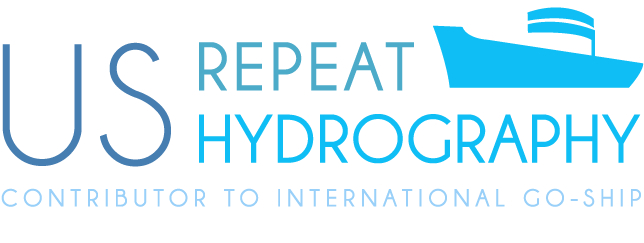
02 October 2013
We had a different sort of week than just one CTD station after another. First we enjoyed a transit through all sorts of ice, dodging zones where heavy ice would significantly slow us down, with a gorgeous sunset and moonrise. Then it was time to recover two arrays of bottom-anchored instruments Alex deployed during February 2010.
When we reached the first mooring site, Alex and Woods Hole mooring expert Jim Ryder (we are most fortunate to have him on board with us for our mooring work) went right to work. The Captain brought the Palmer near the expected location as they tried to communicate with the mooring's release devices. Alex and Jim received only a weak, partial answer so began a search pattern, learning that the releases were more than a mile away from where they had been set down - perhaps an iceberg dragged the mooring sometime during the year. It was then too dark to try to recover the mooring, so we did a short line of CTD stations overnight. In the morning the weather was too iffy for a mooring recovery, so we headed over to the second mooring, about 32 miles away, to try to verify its location. By then the weather was seriously deteriorating and so we were able to do no more than learn that it, too, had been dragged, more than two miles. Further work was impossible and so we headed into the ice pack to wait out an impressively ugly storm. With blocks of ice being tossed about the sea surface in 60-knot winds, thank goodness we were safe on a sturdy icebreaker! When conditions improved, we headed to the first mooring site (the closest), where Jim and his team from the ship (our marine techs and the graduate students) recovered the mooring with few problems. Then we returned to the second mooring site, and in growing darkness its releases were acoustically triggered, and, voila, there was its blinking light beacon! The recovery was trouble free and Alex got back every instrument he deployed.
Readers who are oceanographers may be interested to note that during our lines of CTD stations at each mooring site we saw water at several hundred meters depth that was colder than the freezing point at the sea surface. This can take place when cold water circulates and is cooled under floating, very deep reaching Antarctic ice shelves.
We then had a long steam to the start of our next line of CTD stations during which the students and a couple of other helpers dropped XBTs every 30 minutes over the day and a half transit.
Cruise plan adjustments were at the top of our agenda this week. We get great advice from scientists ashore, but in the end it is our responsibility to manage the cruise. We started with a good plan and are keeping with it to every degree feasible. On the plus side, the station work is going great and we are spending less time in the ice than we thought we might when we planned the cruise. On the minus side we have lost more than 7 days to bad weather. The cruise to date included work of such high scientific priority that we felt compelled to complete it as planned, without reduction, and waiting out bad weather. But now as we begin the second half of this long cruise, we have decided to allot specific amounts of time to each remaining segment of the cruise except for a few "must complete, no matter what" activities. This is one way to get around the unknowns. The Captain is happy to work in a somewhat similar manner: within proper maritime limits he can allocate fuel in a cruise-segment manner roughly similar to our allocation of time. (As nearly all of you know, the ship uses far more fuel breaking ice than traversing open water, and also burns significantly more going, say 11 knots than 9 knots in open water.) Both of us plan when and where we will apply our resources and where we will hold reserves.
We have thus determined that we will have a go at the south-to-north line of stations along 170°W we had been prepared to cut just days ago. We allocated sufficient time to do 8 stations with average 43-mile spacing (but positioned to hit the deeper channels), and we will complete as much of it as the weather permits. Our section across the Ross Sea slope just NW of the major shelf channels has captured cold, fresh, high-oxygen bottom waters of shelf origin on the slope. The coming stations will track this water into the deep interior of the Ross Sea. Then we will move on to the next segment.
We are fortunate to be able to work with this superb team of technical specialists, with our enthusiastic students, with the expert captain, mariners, engineers, and support staff Edison Chouest Offshore provides on the Nathaniel B. Palmer, and with our experienced group from Raytheon Polar Services.
All is well on the Nathaniel B. Palmer.
Jim and Alex